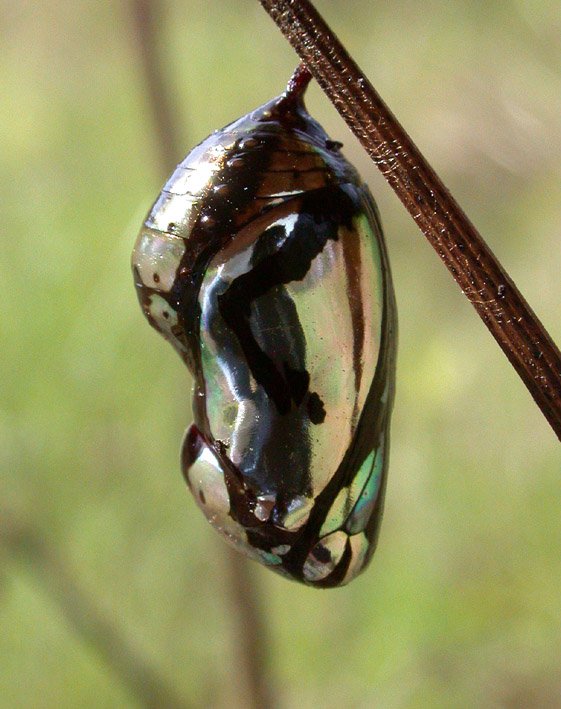Moths, butterflies and skippers: Order Lepidoptera
Butterflies and moths are a group of insects known as lepidopterans, which means 'scaly wings'. It is these overlapping scales that give them their spectacular colours and patterns.
On this page...
Moths, butterflies and skippers (Order Lepidoptera) are some of the most conspicuous and familiar insects. Butterflies in particular are probably one of the few insects that receive more positive than negative media coverage. They have great popular appeal, with some species being conservation icons.

Wanderer Butterfly or Monarch Butterfly, Danaus plexippus.
Image: R.Jessop© Australian Museum
Adult insects of the Order Lepidoptera can be characterised by the presence of scales on the wings and other external parts of the insect. The name of the order reflects this, with 'lepido' meaning scaly, and 'ptera' referring to wings. The mouthparts of adults (when present) are generally tubular, and are adapted for taking in liquids such as the nectar from flowers. Adults usually have two pairs of wings. Within the Sydney region, there are several hundred species of lepidopterans and about 100 of these are butterflies.

Caterpillar of Emperor Gum Moth, Opodiphthera eucalypti. This large moth is common around Sydney and is attracted to street lights at night.
Image: John Edwards© John Edwards
The larvae are often referred to as 'caterpillars', or sometimes 'grubs'. They have chewing mouthparts and mostly feed on plants. In some species, the larvae can be serious agricultural pests.

Chrysalis (pupa) of Common Crow or Oleander Butterfly, Euploea core.
Image: Bruce Hulbert© Bruce Hulbert
A pupal stage is present between the larval and adult stages. This stage is sometimes protected from predators and parasites by a cocoon, or by a shelter built by the larva, or by being underground. Many butterfly pupae rely on being camouflaged to avoid being eaten.
The Order Lepidoptera is extremely diverse, with over 10 000 Australian species described and an additional 10 000 undescribed species. It is estimated that many more are yet to be recognised, and the total number of Australian species may be as high as 30 000.

Adult Emperor Gum Moth, Opodiphthera eucalypti.
Image: R. Jessop© Australian Museum
Butterflies and moths differ in a number of ways, although there are always exceptions to the rules. The main differences include:
- Butterflies are active during the day; moths are active at night.
- Butterflies have knobs at the end of their antennae; moths have antennae without knobs at the end.
- Butterflies are usually brightly coloured; moths are usually dull.
- Butterflies rest with their wings held vertically; moths rest with their wings flat.
Like all insects, butterflies and moths go through metamorphosis (that is, they look different at different stages of their life cycle). During the caterpillar stage they spend their time feeding mostly on plants, to the annoyance of some gardeners. Adult moths and butterflies spend their short lives searching for a mate and feeding on nectar from flowers. They have no jaws, but feed via a tube-like tongue, known as a proboscis. Some adults don't even feed at all and rely on the energy they consumed as caterpillars.
In general, moths are named according to the habits of their caterpillars, whereas butterflies are named after the characteristics of the adults.

